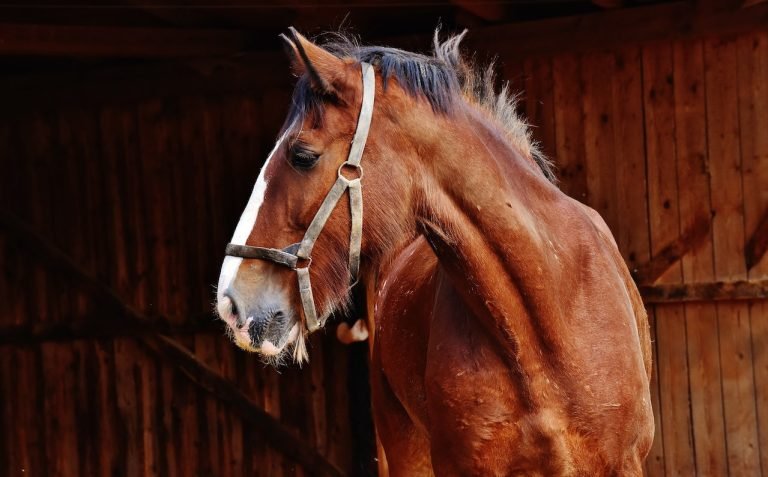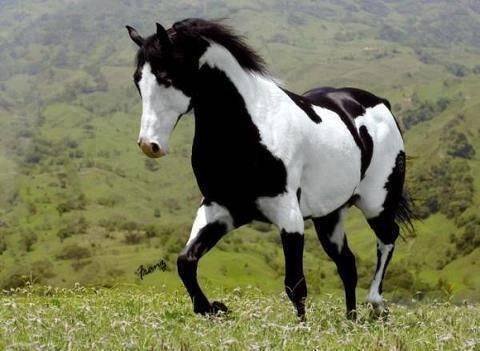For horses to provide top-notch performances at shows, there’s always a lot of work done by the trainer, rider, and horse, from aqua therapy to hours and hours at a schooling ring. A schooling ring is essential since it helps train the horse on whatever they’ll be set to do in the actual competitions. Generally, the term “schooling” is often used by English riders compared to western riders. This might be because the word’s roots can be traced to Europe-based military riding schools like the Spanish Riding School in Vienna, Austria, training grounds for the renowned Lipizzaner dressage horses.
Where Does Horse Schooling Take Place?
Schooling rings are often found at horse shows since this help a horse get ready in an area away from the competition section. However, schooling can occur wherever you need to train or practice with your horse. Schooling is primarily done in the ring, but it can also be done on a trail if you plan on practising trail riding. Apart from practising for trail riding, you can use a schooling trail to check a horse’s behaviour, teach them how to handle the terrain, or deal with distractions that might occur naturally on the trail.
This exposure always makes the horses safer when the rider only wants to relax. Ground driving or luging may also be considered a form of schooling. Schooling can also be based on daily things such as the trailer. You could school the horse not to panic when they step in and out. For a good experience, riders can also be schooled by putting them through exercises that will make them more balanced, limber, and sensitive to the ride.
Rider schooling can be done by having someone lunge the horse. It can also be by having the rider ride independently, with a grounds person, instructor, or fellow rider to check the form and provide guidance. Schooling movements include downward and upward transitions across the gaits, halts, rein backs, and circles, among other exercises. Other more advanced routines a rider can follow include side passes, forehand turns, and leg yields.
Rider may school their horses by trotting over jump patterns or cavalleti as exercises to help their horse compete. The exercises will help improve their rider’s sensitivity and stability. On the other hand, they help the horse improve their balance and responsiveness.
What Does Re-Schooling a Horse Entail?
Re-schooling means training the horse uniquely to break old or unwanted behaviours. Please note that schooling can be achieved with any horse, regardless of the level of training and age. Horses are never fully trained. There’ll always be something to refine or learn. Perhaps it’s a good way for riders to view themselves too.
Schooling Ring Etiquette
With many riders, trainers, and horses together at one point, there’s always the risk of injury or collision. Of course, many rules are set up to avoid any issues, but it’s always important to remind ourselves for personal and general public safety. Sitting on a 1200-pound animal under your will, you have lots of responsibility for the people around you. The schooling arena is already terrifying, to say the least; the last thing you’d want is for people to leave some with long-lasting injuries.
There are many rules stipulated in the United States Equestrian Federation Rule Book regarding procedures to keep you, your horse, your trainer and others safe as you school for a competition or regular training exercise. These rules are primarily applied in USET-rates shows. However, many schooling and unrated shows follow them to ensure show safety. Here are some basic rules you should use during a competition and pet peeves that riders have seen and experienced.
United States Equestrian Federation Standard Rules and Practices
Here are some commonly known rules that some riders are still not adhering to:
- Always pass a horse coming your way on your right. “your horse’s left shoulder and the left shoulder of the incoming horse should be on the same side.” This is often called the left shoulder to the left shoulder.
- To pass a horse going the same direction, pass on the side to the ring’s inside. Passing between a horse and the rail is only good for getting kicked without an escape path.
- Horses that want to make a jump will always have the “right-of-way”. To follow this rule, you must always be aware of your surroundings and avoid doing risky manoeuvres such as circling behind or in front of a jump. Once you stick around the jump, you risk cutting someone off approach or departing the jumps.
Many things could go wrong, from having a scary moment to causing a serious wreck that could hurt you, your horse, and others. This is the only exception to the general left shoulder to left shoulder rule.
- Avoid galloping, trotting, or cantering from one warm-up area to another. Most times, especially in large competitions, several warm-up arenas are placed side by side. Galloping into another arena for any reason is dangerous because other arena users won’t expect a change in traffic. Your presence could easily cause an accident.
- Never follow a horse with a red ribbon on its tail. The ribbon means the horse tends to kick, so you should give it plenty of room.
- Horse riders prepping for a class will always have a higher priority compared to riders taking lessons or trying a horse for sale.
Little-Known USEF Rules
- Always check if a horse has a ribbon on his browband. If he has a red ribbon on his browband, the horse has issues with other horses approaching. Be sure to keep a safe distance.
- There’s a difference between the landing and the guard rail. A landing rail, also known as a placing pole, is a unique rail parallel to the jump. It is positioned before or after the jumps to lengthen or shorten horses landing or takeoff stride.
On the other hand, a guard rail is a pole placed perpendicular to a jump before or after the jump. It’s used to correct a horse’s crooked departure or approach at the jump. It is placed no closer than 2.5 meters (8 feet).
- A landing rail should be set about 3 meters (9 feet) past the jump. These distances are set to ensure that a horse doesn’t land on the gear injuring themselves.
- Safety cups are a must-have in any jump. They are jump cups that easily break away on impact. The rules state that these cups should be supplied in schooling areas and used in every session. The safety ensures that they don’t get tripped even if a horse doesn’t clear the back rail.
- It’s forbidden to touch a standard or hold the rail while a horse attempts to jump it. This rule safeguards the horses as they jump. Someone could intentionally or accidentally raise the fence while the horse jumps, causing serious injuries.
- If an oxer is meant to be jumped in one direction, the arena can only set up one rail in the back element. It can be square or a bit higher than the front oxer. This rule looks to safeguard the horse since fewer rails will topple easier if the horse doesn’t quite make it.
- On a warm-up fence, you can only drape a cooler or blanket over one of the rails. It should also be used in the front pane of the oxer. Covering the back rail or the entire oxer could create an optical illusion which would, in turn, cause unnecessary risk to the horse and rider.
- As of December 1st 2017, it’s not allowed to use earbuds within the schooling area.
- If you’re schooling your horse using a liverpool, ensure the width does not exceed 1.8 meters (5 ft 11″)
Some habits riders and trainers are involved in at the warm-up arena aren’t very courteous to other people. Here are some pet peeves you might not have known:
- Moving poles or setting jumps to build makeshift landing rails, series’ of training configurations. While this is all allowed, some fail to return the equipment once finished.
- Laying claim to a jump when many others are waiting to train using the limited schooling jumps.
- Jumping several jumps or giving full-on lessons within the warm-up ring while others wait to use the oxers. Teaching isn’t the intended purpose of the warm-up arena. People should book private lessons where they won’t bother other riders, grounds people, and trainers.
- Moving side by side with one of several riders, especially as their horses saunter while they chat. This makes it difficult and almost impossible for other rides in the arena to move around them safely.
- Use of insults in the schooling ring. Some trainers are hard on their students, and while it’s great to help them improve, the ring should be a place for building confidence, not destroying it.
- Littering the arena, especially near the jumps. Leaving coffee cups, water bottles, and other containers next to the jumps is hazardous. Learn to be considerate of fellow riders and show staff by finding an appropriate area to leave your trash.
- Leaving a gardening rake with the teeth face up puts both horses and people in danger of stepping on it and injuring themselves. Instead, people should stand the rake against a standard with its teeth facing inward.
- Throwing a cooler over the jumps or dragging a liverpool with no regard to horses that could be spooked.
- Not helping the person using the jump to set themselves up. If you’re waiting to use the jump, be courteous and help the current person, especially if they’ve come to the arena by themselves.
- Having too many unnecessary helpers in the ring, especially if they aren’t paying close attention to others.
- Not paying attention as you exit the warm-up arena. Even after finishing your schooling session, you should be conscious of other riders that you may potentially cut off as you head to the outgate. Avoid distractions such as your phone even after you’re done.
- Arguing with staff, such as the schooling steward or supervisor, when told something is illegal—for instance, incorrect fence placement. The supervisors or stewards are trained to check if everyone is following the rules and regulations to keep everyone safe.
These rules are always reviewed to add new rules for safety in the warm-up arena. It’s always great to take a refresher on these rules, from the popular to the lesser-known ones, to make the arena a better place for everyone.
What is a schooling show?
A schooling show is a show aimed at giving experience to new riders and horses as they prepare for more serious show work. These competitions are often seen as practice or training shows. There are slight differences that set the practice and actual shows apart. For instance, the dress code and rules could be more relaxed in practice while you must uphold them in real competitions.
Jumps might be lower, and the dressage works simpler in practice shows since riders attend for the experience instead of the competition. Schooling tack is also less traditional and more colourful compared to show clothing. Bright patterns and colours are typical in everyday horse schooling, while more formal tech and attire are crucial in horse shows.
Schooling helmets can also be in a variety of styles. The practice shows also accept jodhpur and half-chaps boots instead of the traditional tall boots.






